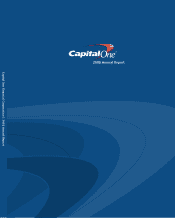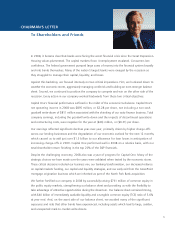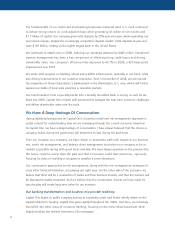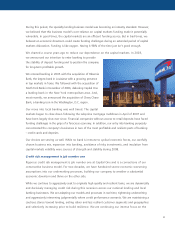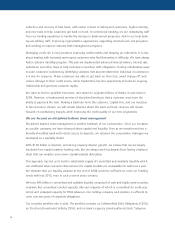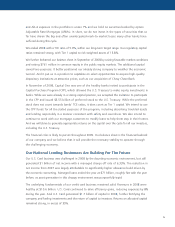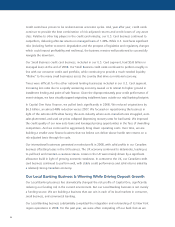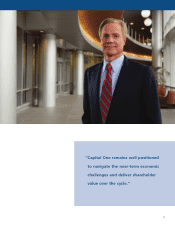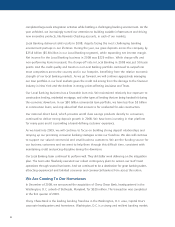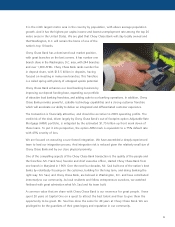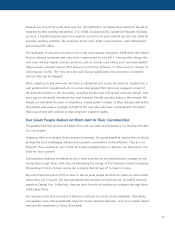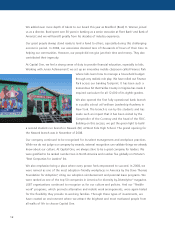Capital One 2008 Annual Report Download - page 4
Download and view the complete annual report
Please find page 4 of the 2008 Capital One annual report below. You can navigate through the pages in the report by either clicking on the pages listed below, or by using the keyword search tool below to find specific information within the annual report.
The fundamentals of our credit card and banking businesses remained solid. U.S. Card continued
to deliver strong returns on a risk-adjusted basis while generating $1 billion of net income and
$1.7 billion of capital. Our company grew total deposits by 32% year-over-year, while expanding our
net interest margin, despite the increasingly competitive deposit market. Total deposits at year-end
were $109 billion, making us the eighth largest bank in the United States.
We continued to attack costs in 2008, reducing our operating expenses by $445 million. Disciplined
expense management has been a key component of offsetting rising credit losses and driving
shareholder value. Our company’s efficiency ratio improved to 43.1% in 2008, a 420 basis point
improvement over 2007.
We made solid progress on building robust and scalable infrastructure, especially in our bank, while
also driving improvements in our customer experience. And, in December of 2008, we announced
the acquisition of Chevy Chase Bank®
, a leading bank in the Washington, D.C. area, which will further
expand our stable of local scale positions in desirable markets.
Our transformation from a specialty lender into a broadly diversified bank is serving us well. As we
head into 2009, Capital One remains well positioned to navigate the near-term economic challenges
and deliver shareholder value over the cycle.
We Have A Deep Heritage Of Conservatism
Having additional perspective on Capital One’s business model and risk management approach is
useful context for understanding how we are managing through the current economic downturn.
At Capital One, we have a deep heritage of conservatism. I have always believed that the choices a
company makes during the good times will determine its fate during the bad times.
From our inception as a company, we have chosen a conservative path with respect to our business
mix, credit risk management, and balance sheet management to position our company to be as
resilient as possible during both good times and bad. We have always operated on the premise that
the future could be worse than the past and that a recession could start tomorrow, rigorously
focusing for years on building a company to weather a severe downturn.
Our conservative approaches to risk management, along with the risk management strategies of
every other financial institution, are playing out right now. On the other side of the recession, we
believe that there will be a revaluation of banks and their business models, and that the winners will
be disproportionately rewarded. And we believe that the conservative choices we have made for
two decades will create long-term value for our investors.
Our banking transformation and business mix provide resiliency
Capital One began its public company journey as a specialty credit card lender wholly reliant on the
capital markets for funding. Capital One grew rapidly throughout the 1990s. Over time, we selectively
diversified into other areas of consumer banking, focusing on the most robust businesses while
largely avoiding less resilient businesses, like mortgages.
2

